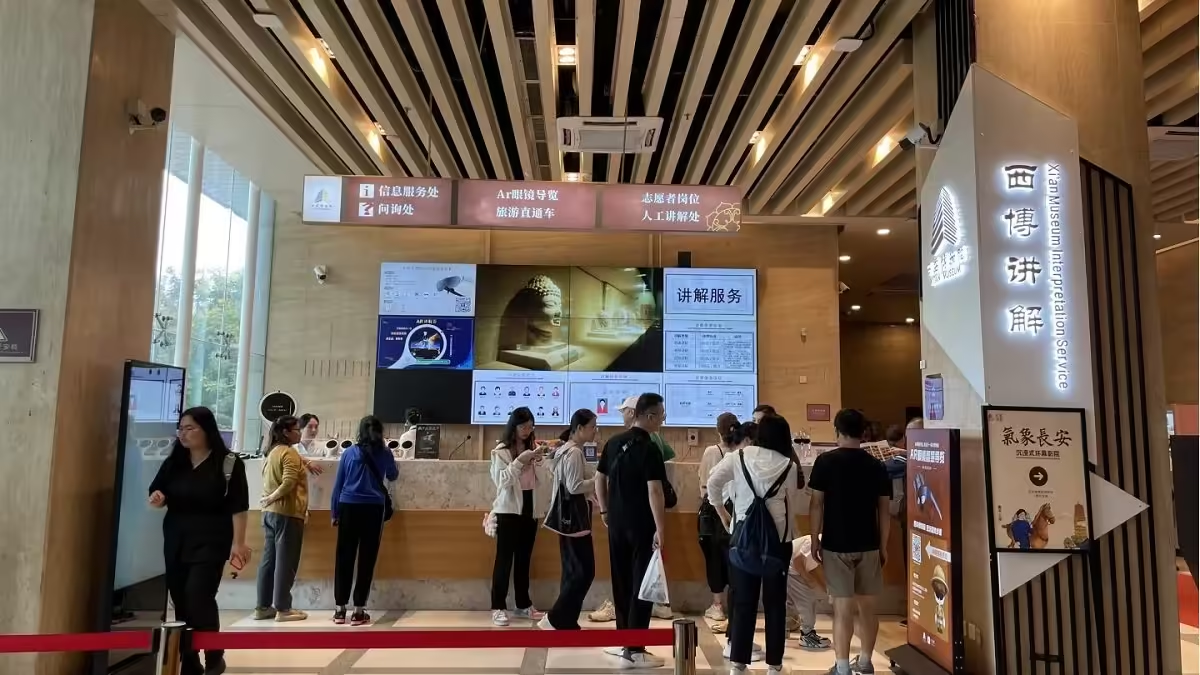Xi’an Museum is a treasure trove of ancient artifacts, offering visitors a unique glimpse into the rich cultural history of one of China’s most historic cities. The museum is free to enter, but visitors are required to make a reservation at least seven days in advance, as same-day tickets may not be available. With convenient access to the museum and surrounding attractions like the Xiaoyanta Pagoda and Jianfu Temple, planning your visit carefully will ensure an unforgettable experience. In this guide, we’ll walk you through the essential information, practical tips, and key exhibits to see during your visit to Xi’an Museum.
Ticket Information
Entry to Xi’an Museum is free, but advance reservations are required at least 7 days prior to your visit. Same-day tickets are often unavailable, so it’s best to book in advance. You can search “Xi’an Museum” on Wechat to make your reservation, but be sure to check availability regularly as time slots are subject to change. Reservations are necessary for specific time slots, which are as follows:
- 8:30-11:00
- 11:00-13:00
- 13:00-15:00
- 15:00-17:00
The museum is closed on Tuesdays and during the Chinese New Year’s Eve. When you arrive, be sure to bring your ID card, as no paper tickets are issued. Access to the museum is granted by scanning your ID at the entrance. You must enter at your designated time slot—early entry is not permitted, and failure to bring your ID will prevent you from entering.
Entrance and Parking Tips
If you need to store luggage, head to the West Gate of Xi’an Museum. Whether you are driving or walking, the West Gate is the place to be. The West Gate also has an official parking lot for visitors arriving by car. Luggage storage outside the West Gate is free, while the North Gate and the interior of the museum do not offer storage options.
Tip: I recommend entering from the West Gate and exiting from the North Gate. This avoids the crowds coming in from the North Gate, which is typically where tour groups enter. After your visit, you can take a stroll around the Xiaoyanta Pagoda, which is nearby and offers great photo opportunities.
Facilities and Amenities
Once you pass through the entrance gate at the West Gate, you will find a restroom to the left. The restrooms inside the museum often have long lines, so it’s best to use the restroom before entering.
Inside the museum, you can opt for a guided tour. There are two options:
- Manual guide: A human guide can provide a personalized tour for a fee of 200 yuan (for 1-10 people).
- Audio guide: An electronic audio guide is available for a deposit of 100 yuan and a rental fee of 30 yuan.
Tip: Do not rush to visit the museum’s gift shop or cultural products section. It’s best to focus on the exhibits first, and then, after your visit, you can browse and purchase items related to your favorite artifacts.
Elevators are not always available, but if you require one, simply contact the security staff by phone to request access.
Tour Route
Xi’an Museum is divided into three main sections: the museum itself, the Xiaoyanta Pagoda, and the Jianfu Temple Garden. To avoid crowds, especially those from tour groups, it’s recommended to start your visit at the museum’s West Gate (which will lead you through the Basement, Ground Floor, and Second Floor). After visiting the museum, exit through the North Gate and make your way to the Xiaoyanta Pagoda (a great spot for photos) and then explore the Jianfu Temple Garden.
Now, let’s focus on the museum’s key exhibits, especially the ones you cannot miss! The Basement (B1) exhibition hall is a must-see, so be sure to visit this area first. As you enter the museum, you’ll find a temporary exhibition in front of you, featuring a map illustrating the changes in the city of Chang’an. On the left side, there’s an exhibition about Buddhist statues, but the Basement (B1) exhibits are the most essential to explore.
Other Important Exhibits
While there are many treasures to discover, make sure you don’t miss out on the museum’s most famous artifacts, such as jade sculptures, Tang Dynasty figurines, and the famous Nine Tripod Cauldrons. These artifacts not only showcase the craftsmanship of ancient Chinese civilizations but also offer insights into the city’s rich history as the ancient capital of China.

